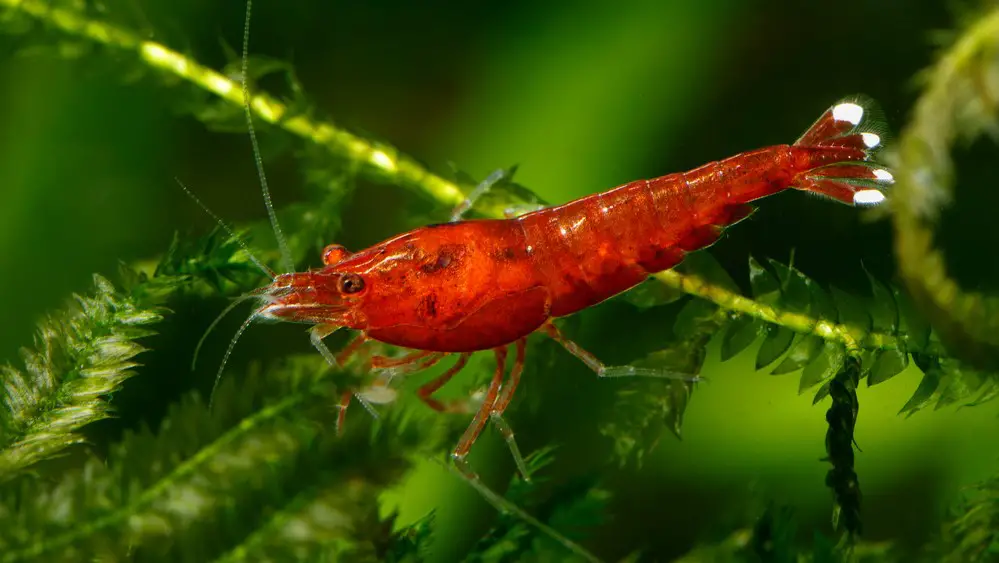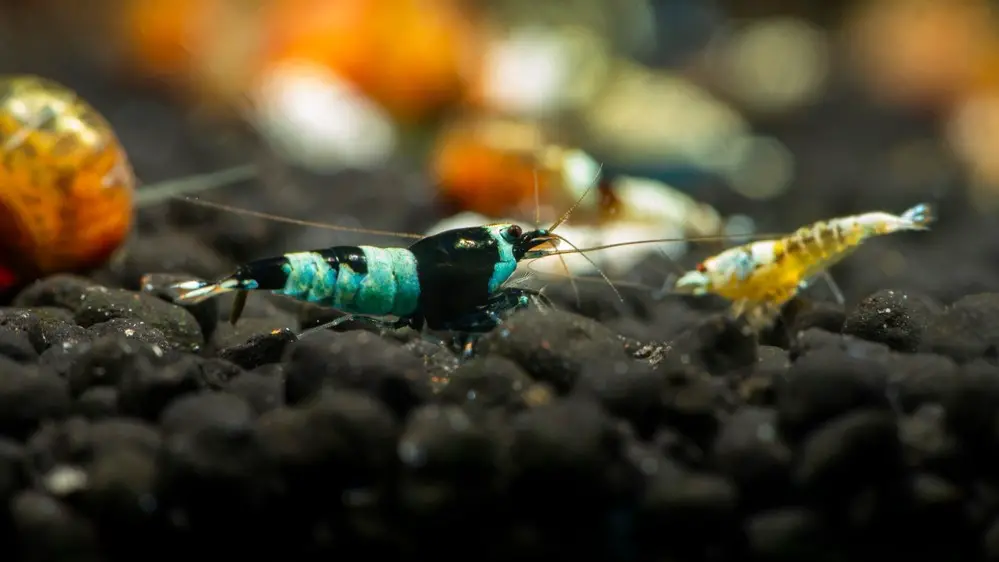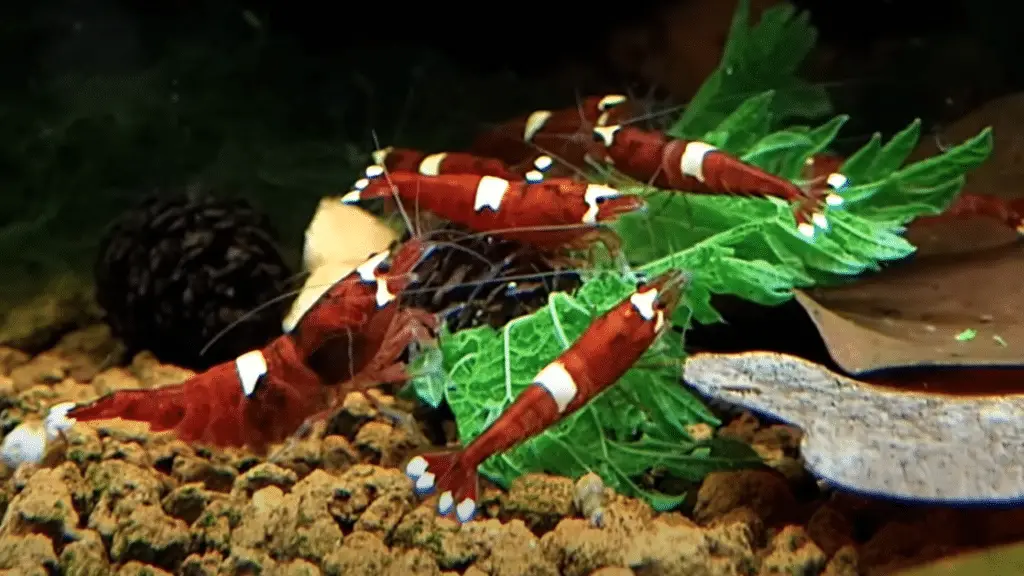Have you ever found yourself staring at your Taiwan Bee shrimp tank, a sense of frustration creeping in as you notice the survival rate of your shrimplets isn’t what you expected? You’ve done everything by the book, yet something seems off. Could it be the pH level, the feeding schedule, or perhaps the water changes
tank, a sense of frustration creeping in as you notice the survival rate of your shrimplets isn’t what you expected? You’ve done everything by the book, yet something seems off. Could it be the pH level, the feeding schedule, or perhaps the water changes ?
?
Let’s explore a situation where a shrimp keeper like you has faced this challenge, and the delicate balance required to ensure the survival of these beautiful creatures.
Increasing Taiwan Bee shrimplet survival rates requires a careful balance of factors including pH level, tank cycling, feeding, filtration, and water changes. Stability is key, with attention to gentle flow, minimal water changes, and avoiding overfeeding.
shrimplet survival rates requires a careful balance of factors including pH level, tank cycling, feeding, filtration, and water changes. Stability is key, with attention to gentle flow, minimal water changes, and avoiding overfeeding.
In my early days as a shrimp keeper, I was mesmerized by the beauty of Taiwan Bee shrimplets. But with that beauty came challenges. Despite following the usual guidelines, I struggled with shrimplet survival rates.
shrimplets. But with that beauty came challenges. Despite following the usual guidelines, I struggled with shrimplet survival rates.
I tinkered with pH levels, extended the cycling of my soft water tanks to 3-4 months, and even adjusted my feeding patterns. Over time, I learned the importance of adequate filtration, gentle flow, and the delicate art of water changes.
tanks to 3-4 months, and even adjusted my feeding patterns. Over time, I learned the importance of adequate filtration, gentle flow, and the delicate art of water changes.
A few liters at a time became my mantra, and I discovered that stability was indeed the key to success.
Join me on this journey as we explore the intricate dance of raising Taiwan Bee shrimplets, and how you too can overcome these challenges, just as I did over an extended period of trial and error.
Let’s embark on this exciting adventure together, and give your shrimplets the thriving environment they deserve!
How does pH level affect Taiwan Bee shrimplet survival?

The pH level in a Taiwan Bee shrimp tank plays a vital role in the survival of the shrimplets. Taiwan Bee shrimplets thrive in a specific pH range, typically around 6. Maintaining the pH level within this range creates an environment that mimics their natural habitat of software bee shrimp, allowing them to grow and develop properly.
Buffering the soil to keep the pH down to this level is essential. If the pH level strays too far from this range, it can cause stress to the shrimplets, leading to weakened immune systems and increased susceptibility to diseases. In extreme cases, a significant pH swing can even be fatal.
Maintaining the pH level isn’t just about keeping it low; stability is key. Sudden changes in pH can be just as harmful as having a pH level that’s too high or too low. Even a 10% swing in pH can potentially harm the shrimplets. Therefore, careful monitoring and gradual adjustments are necessary to keep the pH stable.
The pH level also affects other aspects of water chemistry, such as the availability of minerals and nutrients that the shrimplets need. By keeping the pH level in the optimal range, shrimp keepers ensure that the shrimplets have access to the essential elements they need to grow and thrive.
and nutrients that the shrimplets need. By keeping the pH level in the optimal range, shrimp keepers ensure that the shrimplets have access to the essential elements they need to grow and thrive.
The pH level in a Taiwan Bee shrimp tank is not just a number; it’s a critical factor that affects every aspect of the shrimplets’ lives. From their growth and development to their health and survival, maintaining the right pH level is a delicate balance that requires attention, understanding, and care.
It’s a dance that every shrimp keeper must master to ensure the survival and flourishing of their beautiful Taiwan Bee shrimplets.
What is the importance of tank cycling in raising Taiwan Bee shrimplets?
Tank cycling is a fundamental aspect of shrimp keeping, especially when it comes to raising delicate Taiwan Bee shrimplets. The process of cycling a tank involves allowing beneficial bacteria to establish themselves, which in turn helps to break down harmful ammonia and nitrites into less toxic nitrates . This process creates a stable and healthy environment for the shrimplets to thrive.
. This process creates a stable and healthy environment for the shrimplets to thrive.
For Taiwan Bee shrimplets, the cycling process is even more critical. These shrimplets require a well-established tank with stable water parameters . Cycling the soft water tanks
. Cycling the soft water tanks for an extended period, such as 3-4 months, allows the necessary bacteria to grow and the water chemistry to stabilize.
for an extended period, such as 3-4 months, allows the necessary bacteria to grow and the water chemistry to stabilize.
This extended cycling period ensures that the tank is free from harmful substances that could otherwise harm or even kill the shrimplets.
The importance of tank cycling also extends to the overall stability of the tank environment. A well-cycled tank provides a consistent and predictable habitat, reducing stress on the shrimplets and allowing them to grow and develop without the risk of sudden changes that could be detrimental to their health.
Furthermore, a properly cycled tank supports the growth of other microorganisms and algae that serve as natural food sources for the shrimplets. This creates a self-sustaining ecosystem that provides the shrimplets with the nutrients they need while also keeping the water clean and balanced.
that serve as natural food sources for the shrimplets. This creates a self-sustaining ecosystem that provides the shrimplets with the nutrients they need while also keeping the water clean and balanced.
In essence, tank cycling is not just a preparatory step; it’s a foundational aspect of raising Taiwan Bee shrimplets. It sets the stage for a healthy and thriving shrimp community, ensuring that the water chemistry, biological balance, and overall habitat are in perfect harmony.
It’s like preparing the soil in a garden; without the right foundation, the plants won’t grow. Similarly, without proper tank cycling, Taiwan Bee shrimplets won’t have the stable and nurturing environment they need to survive and flourish. It’s a patient and careful process, but one that reaps beautiful rewards for those who master it.

How can overfeeding impact the health of a Taiwan Bee shrimp tank?
Overfeeding is a common mistake in shrimp keeping, and it can have serious consequences, especially in a Taiwan Bee shrimp tank. While it might seem generous to provide ample food, overfeeding can lead to a cascade of problems that can threaten the entire shrimp community.
First and foremost, overfeeding in a low pH tank can kill the tank. Excess food that the shrimp do not consume begins to decay, releasing ammonia and other harmful substances into the water. In a Taiwan Bee shrimp tank, where the pH is carefully maintained around 6, these substances can quickly become toxic, leading to stress, illness, or even death among the shrimplets.
The problem is further exacerbated in an uncycled tank, where the necessary bacteria to break down these substances are not yet established. Without these bacteria, the harmful effects of overfeeding can be even more pronounced, leading to a rapid decline in water quality and the health of the shrimp.
Overfeeding also disrupts the delicate balance of the tank’s ecosystem. It can lead to algae blooms and the growth of unwanted microorganisms, which can outcompete the beneficial bacteria and other organisms that the shrimplets rely on. This can create an unstable environment where sudden changes can occur, further stressing the shrimp.
In a Taiwan Bee shrimp tank, where stability is key, overfeeding is like throwing a wrench into a finely tuned machine. It disrupts the balance, pollutes the water, and threatens the very lives of the shrimp that call the tank home.
The best advice is to feed sparingly and closely observe the shrimp’s behavior and the tank’s condition. With careful monitoring, a few liters at a time can make all the difference. Remember, in the Taiwan Bee shrimp keeping world, less is often more, and patience and understanding are the keys to a healthy and thriving shrimp community.
It’s not just about feeding; it’s about nurturing, and that requires a delicate touch and a keen eye.

Why is gentle flow and minimal water changes crucial for Taiwan Bee shrimplet survival?
Gentle flow and minimal water changes are two essential elements in the delicate art of Taiwan Bee shrimplet survival. Let’s explore why these factors are so vital and how they work together to create a thriving environment for these beautiful creatures.
Starting with gentle flow, it’s important to understand that Taiwan Bee shrimplets are delicate beings that thrive in calm waters. A gentle flow in the tank ensures that the water is circulated without creating strong currents that could stress or harm the shrimplets.
This gentle movement helps prevent dead spots in the tank, where waste and harmful substances can accumulate. The water remains clean and oxygenated by maintaining a gentle flow, providing the shrimplets with the ideal environment to grow and develop.
Now, let’s talk about minimal water changes. While water changes are common in aquarium maintenance, but they can be particularly risky for Taiwan Bee shrimplets. Even a 10% water change can potentially lead to a 10% swing in pH, which can be fatal for the shrimplets.
Stability is key with Taiwan Bee shrimplets, and sudden changes in water chemistry can disrupt that stability, leading to stress, illness, or even death.
The best approach is to make minimal water changes, only a few liters at a time, and to top up for evaporation rather than making significant changes. This approach maintains the stability of the tank’s environment, ensuring that the pH, temperature, and other vital parameters remain consistent.
It’s a slow and careful process that pays off in the long run by providing the shrimplets with the stable and nurturing environment they need to thrive.
Gentle flow and minimal water changes are good practices and essential components of Taiwan Bee shrimplet survival. They work together to create a calm, stable, and clean environment where the shrimplets can grow, develop, and flourish. It’s a dance of patience, understanding, and care, where every movement is measured, and every decision is weighed.
But for those who master this dance, the reward is a thriving community of beautiful Taiwan Bee shrimplets, each one a testament to the delicate art of shrimp keeping. It’s a journey worth taking, and one that begins with a gentle touch and a careful eye.

Conclusion: Increasing Taiwan Bee Shrimplet Survival Rates
The journey to increasing Taiwan Bee shrimplet survival rates is a delicate dance that requires attention to detail, patience, and understanding. From maintaining the right pH level to proper tank cycling, avoiding overfeeding, ensuring gentle flow, and making minimal water changes, each aspect plays a vital role in creating a thriving environment for these beautiful creatures.
It’s a rewarding endeavor that brings joy and beauty to those who master it.
If you need any assistance or have questions on your shrimp keeping journey, please don’t hesitate to reach out. If you can’t find me here, check out Aquarium Shrimp Keeping on Facebook.
Happy Shrimp Keeping, Shrimpfam!
FAQ: Taiwan Bee Shrimp
Q. How big do Taiwan Bee shrimp get?
A. Taiwan Bee shrimp typically grow to a size of around 1 to 1.5 inches (2.5 to 3.8 cm). Their small size makes them ideal for nano tanks and adds to their delicate charm.
Q. What is a Taiwan Bee?
A. A Taiwan Bee is a type of freshwater shrimp known for its stunning coloration and patterns. They are a variant of the Caridina species and are highly sought after by shrimp enthusiasts. Taiwan Bee shrimp come in various colors, including black, red, and blue, with beautiful white patterns that make them stand out in any aquarium.
Q. Are bee shrimp easy to care for?
A. While bee shrimp, including Taiwan Bee shrimp, are incredibly beautiful, they are considered more challenging to care for compared to some other shrimp species. They require specific water parameters, including a lower pH, and thrive in well-cycled and stable environments. Proper care, attention to detail, and understanding of their needs are essential for success in keeping bee shrimp.
Q. Will Tiger shrimp breed with bee shrimp?
A. Yes, Tiger shrimp can breed with bee shrimp, including Taiwan Bee shrimp, as they are both part of the Caridina genus. This crossbreeding can result in unique and attractive offspring with various patterns and colors. However, it’s essential to be mindful of the potential genetic complexities and the impact on the purity of specific shrimp lines if breeding is a primary goal in your shrimp keeping.
